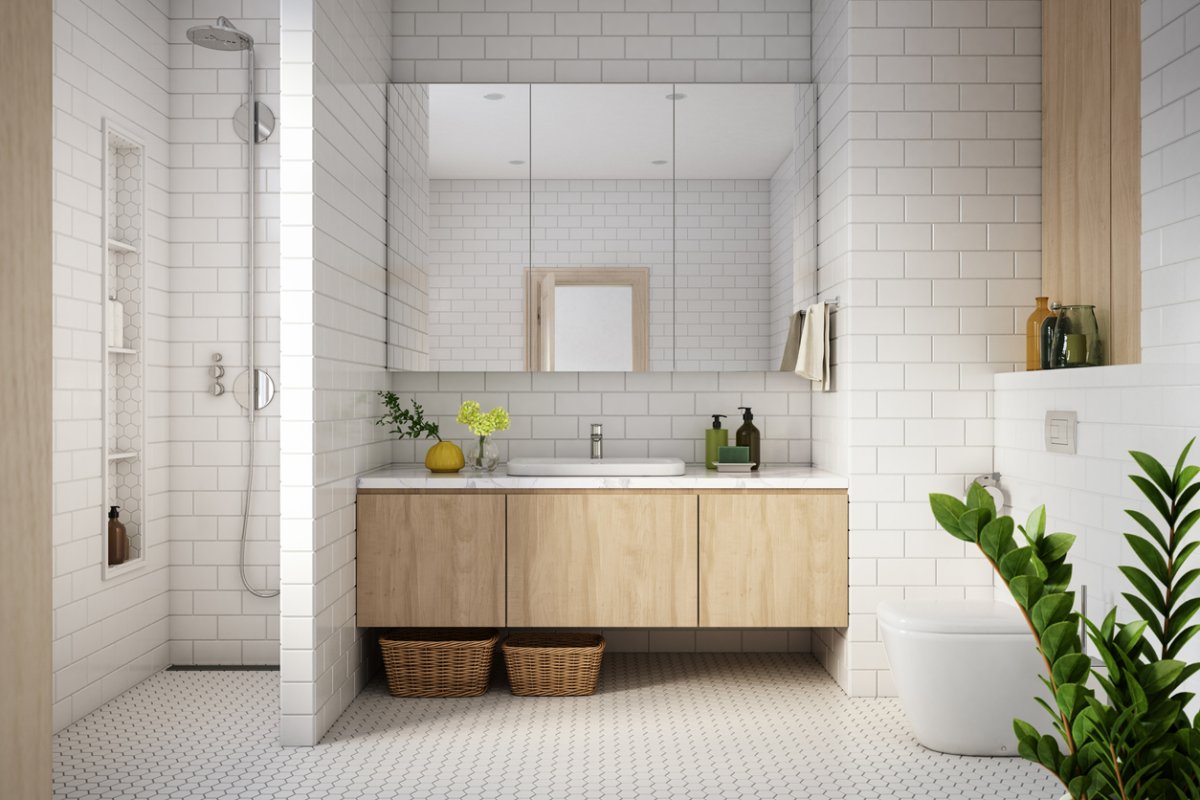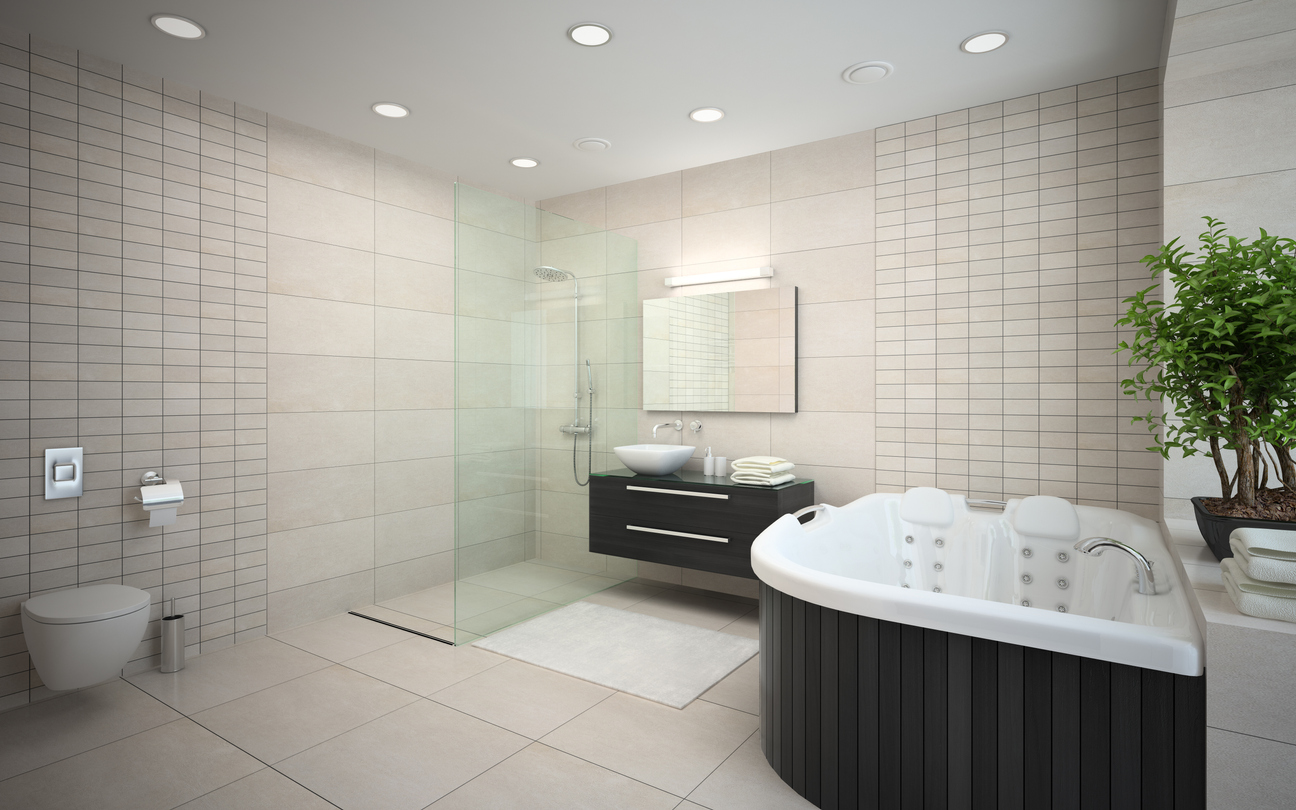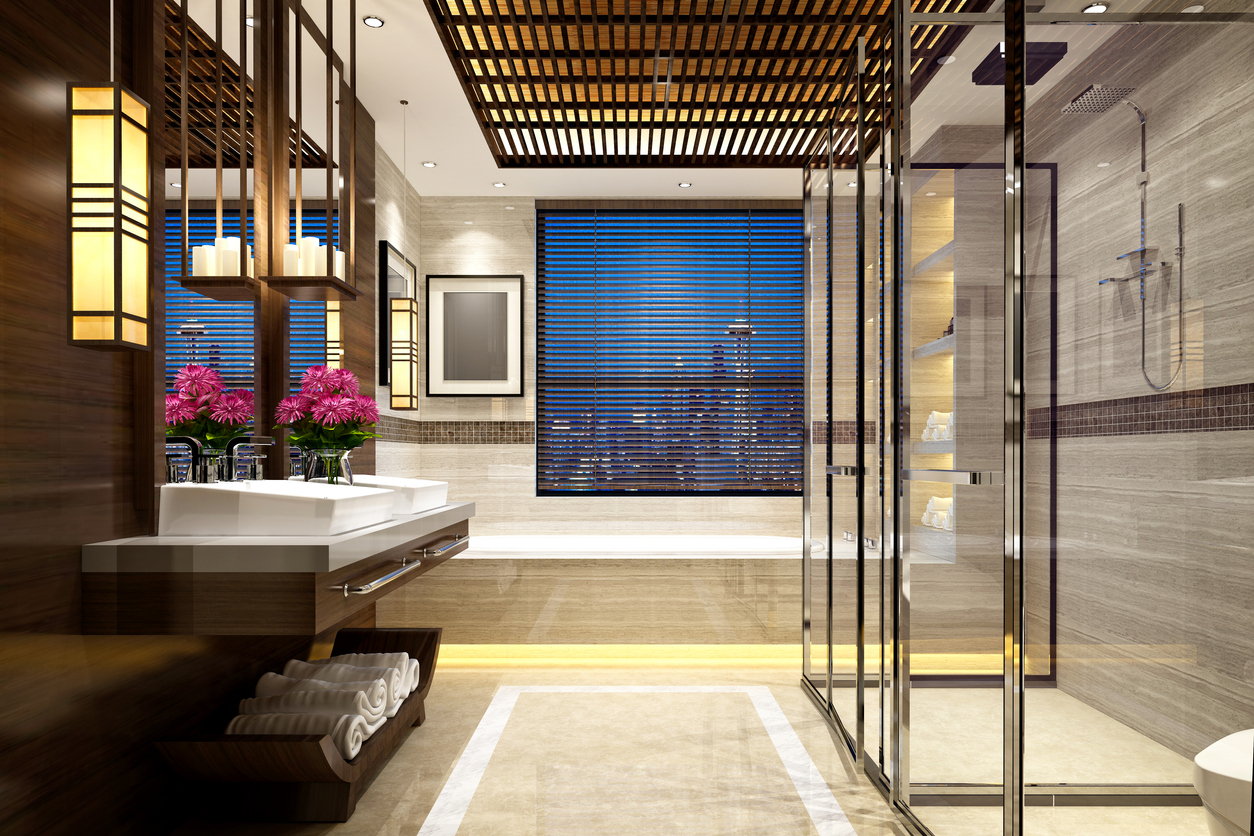

We may earn revenue from the products available on this page and participate in affiliate programs. Learn More ›
Rising in popularity as a high-end bathroom option, wet rooms transform the look, feel, and functionality of a bathroom into a waterproof space. Originally created as a functional way to fit more into a small bathroom, designers have been creating wet rooms that feel more like spas. While most wet rooms are covered in tile and include an open shower, some may be surfaced in other waterproof materials, have a half-wall of glass by a shower, or include a bathtub with a separate drain.
The biggest challenge of a wet room is ensuring that the entire room is securely waterproofed, and that the water flows into the room’s main drain. With the right materials and installation, a wet room can become a good return on investment. Keep reading to find out more about modern wet rooms.
PRO: A wet room can create the feeling of a larger space.
Because the shower floor does not have a visible shower tray and the walls do not need a divider to contain shower water, the surface materials can continue seamlessly throughout the room. These unbroken surfaces help to make the bathroom look roomier.
The elimination of transitions can make a bathroom easier to use for those who can no longer step into a tub or over a shower curb. Also, wet rooms can be easier to clean, because you can use the same types of cleaners on all of the surfaces.
CON: Everything gets wet.
With an open shower, it’s conceivable that water will splash around the room and get any towels, toiletries, and even toilet paper wet. And, the humidity that a traditional shower held now makes its way across the whole room. Excess moisture, sealing and waterproofing, and drainage are some of the top concerns in a wet room.
If you’re considering a wet room and are worried about the entire room getting wet, you can install extra ventilation to help prevent mold and mildew. You also can incorporate in-wall storage for toilet paper, towels, and accessories to avoid dampness. Anti-slip flooring helps make it safer to walk around in a wet room and a radiant heat flooring system helps water evaporate more quickly from the floor surface.
RELATED: 10 Bathroom Trends You Might Regret

PRO: Wet rooms can take many forms.
The main design rule when it comes to creating a wet room is making sure that the space is waterproof. Beyond that, there are seemingly endless possibilities for the bathroom’s shape, fixtures, and finishes.
While some wet rooms are tiny spaces crammed with the essentials, some luxury bathrooms use a glass wall with a glass door to divide a bathroom into a wet room side (with shower, sink, and tub) and a non-wet room side. There also are wet room bathrooms that have a partial glass partition separating the shower from the toilet and sink.
CON: Not all building materials can be used in a wet room.
Since a wet room needs to be waterproof, there is a limit on the types of materials and home decor used in the bathroom. Many opt for tiling the surfaces in a straightforward simple pattern, but mosaics, patterns, and inlays of other tiles or materials can be used. Other surface options include sealed concrete, stone, and metal.
Even though wet rooms can still have bathtubs, they usually are only in larger wet rooms and are separate from the shower. They also benefit from a separate drain.

RELATED: All You Need to Know About Doorless Showers
PRO: It can raise the value of your property.
Remodeling an ensuite in the main bedroom or a secondary bathroom in a home can raise the value of a property. According to Remodeling’s Cost vs. Value Report, the renovation of a bathroom can have a return on investment of about 60 percent. Since many buyers tend to look at a high-end modern wet room and consider it a luxurious addition, it might recoup somewhat more at the time of sale.
CON: Tiling a wet room can get expensive.
Unlike a traditional bathroom where occasional drips and spills may hit the walls and floors outside of a shower, the entire room will get wet. So, instead of simply tiling just the shower, the entire room needs tile. In some cases the ceiling is tiled, too. This process protects the structure and surrounding rooms from water damage and helps fend off mold and mildew in the wet room.
Covering all of the surfaces in a waterproof material, like tile, from top to bottom can get expensive. The waterproofing applied underneath the tile also adds to the cost.
